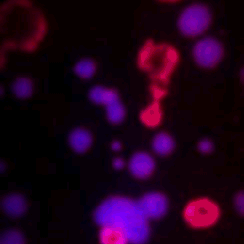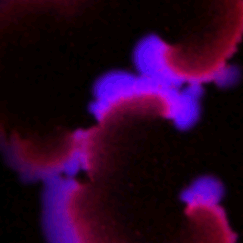Please click here for my Lab Website!
Lab opens January 1st, 2017
Spatial Regulators for Bacterial Cell Division
Inside the Cell
LEFT. An oscillatory system positions cell division at mid-cell so that daughter cells are equal in size (Wu et al., Front Microbiol 2015). RIGHT. The standing wave oscillation is emphasized in longer cells where cell division is inhibited (Shen & Chow, Biomicrofluidics, 2014)
Outside the Cell
On a flat bilayer, the spatial regulators of cell division can form a variety of patterns. Dissecting how these patterns form outside of the cell is unravelling the oscillatory mechanism used inside the cell. (Vecchiarelli et al., PNAS 2016)
Spatial Regulators for Bacterial DNA Segregation
Inside the Cell
A plasmid transported and segregated in E.coli (Ringgaard et al., PNAS 2009)
Outside the Cell
A bead transported by a protein gradient on a nucleoid biomimetic (Vecchiarelli et al., PNAS 2014)
Simulations
Simulations of a bead transported by a protein gradient on a surface (Vecchiarelli et al., BioArchitecture 2014)
A Diffusion-Ratchet Model for Bacterial DNA Segregation and Transport
- No Surface Confinement
- Transport of Surface-Confined Cargo
- Segregation of Surface-Confined Cargo
Animations by Ethan Tyler
ParA protein (green) binds the nucleoid and the ParB protein (red) binds the cargo. ParB releases ParA around the cargo, creating a ParA gradient. Without surface confinement, the cargo can diffuse away. In a bacterial cell, the narrow gap between membrane and nucleoid confines the cargo to the nucleoid. Cargo transport is directed by ParA contacts at its movement front and reversal is suppressed by the lack of ParA behind it. Replicated cargo segregate as they chase ParA in opposite directions. (Vecchiarelli et al., PNAS 2014)















